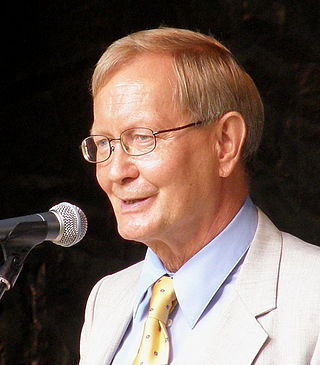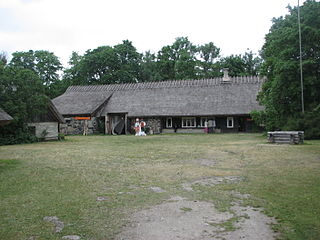| |||||
| Decades: | |||||
|---|---|---|---|---|---|
| See also: | |||||
This article lists events that occurred during 1972 in Estonia .
| |||||
| Decades: | |||||
|---|---|---|---|---|---|
| See also: | |||||
This article lists events that occurred during 1972 in Estonia .
| | This section is empty. You can help by adding to it. (December 2020) |
| | This section is empty. You can help by adding to it. (December 2020) |
In 1972 Tallinnfilm company made movies:

Siim Kallas is an Estonian politician, former Prime Minister of Estonia, and former European Commissioner. He served as the European Commissioner for Transport between 2010 and 2014. Before that he was the European Commissioner for Administrative Affairs, Audit and Anti-Fraud between 2004 and 2009. In both Barroso Commissions he was also a Vice-President. He was twice appointed the Acting Commissioner for Economic and Monetary Affairs and the Euro in Olli Rehn's stead, from 19 April 2014 to 25 May 2014 while he was on electoral campaign leave for the 2014 elections to the European Parliament and from 1 July 2014 to 16 July 2014 after he took up his seat.

The Riigikogu is the unicameral parliament of Estonia. In addition to approving legislation, the Parliament appoints high officials, including the Prime Minister and Chief Justice of the Supreme Court, and elects the President. Among its other tasks, the Riigikogu also ratifies significant foreign treaties that impose military and proprietary obligations and bring about changes in law, as well as approves the budget presented by the government as law, and monitors the executive power.

Tunne-Väldo Kelam is an Estonian politician and former Member of the European Parliament (MEP) from Estonia. He is a member of the Pro Patria and Res Publica Union, part of the European People's Party.

Juhan Smuul was an Estonian writer. Until 1954 he used the given name Johannes Schmuul. Smuul was one of the most recognized writers in Soviet Estonia and was a member of the Central Committee of the Communist Party of Estonia, a deputy of the Supreme Soviet of the USSR and the Supreme Soviet of the Estonian SSR, chairman of the Estonian Writers' Union, secretary of the board of the Union of Soviet Writers.
The Supreme Court of Estonia is the court of last resort in Estonia. It is both a court of cassation and a constitutional court. The courthouse is in Tartu.
The Estonian Sovereignty Declaration, fully: Declaration on the Sovereignty of the Estonian SSR, was issued on November 16, 1988 during the Singing Revolution in the Estonian SSR. The declaration asserted Estonia's sovereignty and the supremacy of the Estonian laws over the laws of the Soviet Union. Estonia's parliament also laid claim to the republic's natural resources: land, inland waters, forests, mineral deposits and to the means of industrial production, agriculture, construction, state banks, transportation, municipal services, etc. in the territory of Estonia's borders. November 16 is now celebrated annually as the "Day of Declaration of Sovereignty".

The Estonian Soviet Socialist Republic, also known as the Estonian SSR, Soviet Estonia, or simply Estonia, was a union republic and an ethnically based administrative subdivision of the former Soviet Union (USSR) covering the occupied and annexed territory of Estonia in 1940–1941 and 1944–1991. The Estonian SSR was nominally established to replace the until then independent Republic of Estonia on 21 July 1940, a month after the 16–17 June 1940 Soviet military invasion and occupation of the country during World War II. After the installation of a Stalinist government which, backed by the occupying Soviet Red Army, declared Estonia a Soviet constituency, the Estonian SSR was subsequently incorporated into the Soviet Union as a "union republic" on 6 August 1940. Estonia was occupied by Nazi Germany in 1941, and administered as a part of Reichskommissariat Ostland until it was reconquered by the USSR in 1944.
Aleksander Ansberg was an Estonian politician. He was a member of the Communist Party of Estonia.
These are lists of political office-holders in Estonia.
The following lists events that happened during 1988 in the Union of Soviet Socialist Republics.
The following lists events that happened during 1942 in the Union of Soviet Socialist Republics.

Heino Mandri was an Estonian film and stage actor.
The following lists events that happened during 1952 in the Union of Soviet Socialist Republics.
The following lists events that happened during 1958 in the Union of Soviet Socialist Republics.
Estonian Restoration of Independence, legally defined as the Restoration of the Republic of Estonia, was proclaimed on 20 August 1991. On that day at 23:02 local time, the Supreme Council of the Republic of Estonia, in agreement with the Estonian Committee, declared the illegal Soviet occupation and annexation of the country terminated, and proclaimed the full restoration of the independence of Estonia.
Uno Anton was an Estonian politician and a voter for the Estonian restoration of Independence.

The Supreme Soviet of the Estonian SSR was the formal rubber stamp legislative body of the Estonian SSR without any substantive meaning, which was formally elected in general elections, but whose members were essentially appointed by the leadership of the Communist Party. Before 1988, the Supreme Soviet had no meaningful political role. After its first democratic elections on 18 March 1990, the institution was renamed the Supreme Council of the Republic of Estonia on 8 May 1990.
This article lists events that occurred during 1989 in Estonia.